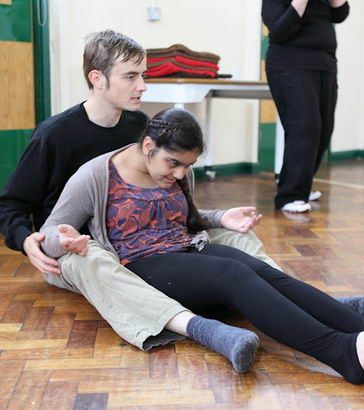
It is important to strike a balance between:
- What the child needs from a purely therapeutic/medical perspective;
- What the child is able to tolerate at any particular time; and
- The promotion of independent activity and physical participation.
The key to bringing these together lies in engagement and motivation (Carpenter, 2010).
It is also vital to involve children in physical activities that are interactive and engaging (such as physio or music therapy).
Observe each response and use pauses consistently to encourage each child to respond (Ware, 2003).
Remember, effective learning must always be grounded in relevant and meaningful everyday experiences and activities.

The most effective treatments are those that are used in daily activity and become part and parcel of a child's life.
If a therapy is not used on a daily basis, then the therapy will not have a maximum effect.
(Scrutton, 1984).
What activities might we put in a physical curriculum for pupils with PMLD?
For those with PMLD, their...disability
often renders them helpless, without the opportunity to make real choices about what affects them. We need to give them back
as much control as possible, even though most tasks require adult intervention and support. In this way they will start to
believe in themselves.
Mednick, 2002

Bower, E., Mitchell, D., Burnett, M., Campbell, M.J. and McLellan, D.L. (2001) Randomised controlled trial of physiotherapy in 56 children with cerebral palsy followed for 18 months, Developmental Medicine and Child Neurology, 43, 4-15.
Carpenter, B. (2010) Curriculum Reconciliation and Children with Complex Learning Difficulties and Disabilities, London: Specialist Schools and Academies Trust.
Mednick, M. (2002) Supporting Children with Multiple Disabilities, Birmingham: Question Publishing.
Scrutton, D. (1984) Management of the Motor Disorders of Children with Cerebral Palsy. London: Spastics International Medical Publishers.
Ware J. (2003) Creating a Responsive Environment for People with Profound and Multiple Learning Difficulties, London: David Fulton.